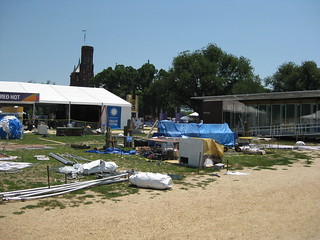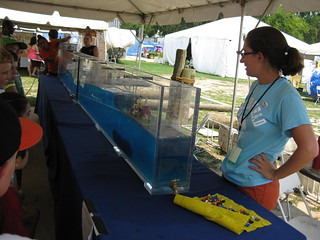Two journalists from one of Japan’s leading newspapers visited Oregon’s central coast recently to report on the gradual arrival of debris from the devastating March 2011 earthquake and tsunami that struck Aomori prefecture, and how that tragedy has spurred Oregon’s coastal towns to prepare for similar disasters on US shores.
Tomoji Watanabe and Yu Miyaji visited OSU’s Hatfield Marine Science Center in Newport, and interviewed dozens of coastal officials and residents about lessons learned from the Japanese tsunami.
The pier in question originated in the Japanese town of Misawa, and after more than a year adrift in the Pacific, washed up on Oregon’s Agate Beach last June. Authorities estimated that the “tsunami dock” attracted more than 13,000 visitors to the beach before state contractors cut it apart and hauled it off for disposal.
OSU scientists, including specialists from Oregon Sea Grant, were particularly interested in the thousands of living plants and marine animals – most of them strangers to US shores – that survived the trans-Pacific voyage. Fearing that the organisms might become invasive if allowed to get loose in the wild, state environmental agencies scraped, incinerated and buried them after scientists had a chance to retrieve samples.
A small segment of the pier has been on display at the HMSC Visitor Center, and a larger piece is expected to be installed in the Visitor Center’s lobby this March to commemorate the second anniversary of the Japanese disaster.
Additional debris from the tsunami is expected to wash up on Pacific Northwest coasts; the state has set up a special phone number, 211, for reports of suspected debris.
- Read the complete article from the Asahi Shimbun Globe
- Learn more about Oregon Sea Grant’s work helping coastal communities to prepare for tsunamis and other disasters




